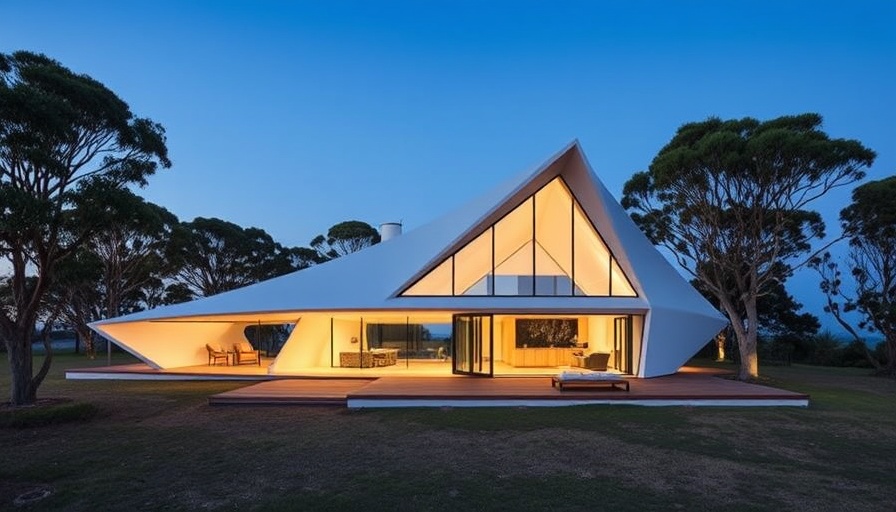
The Architectural Delight of the Cake House
Located on the stunning Australian coast, the Cake House, designed by architect Alexander Symes, reimagines what a relaxed, modern workspace can look like. With its uniquely kite-shaped architecture, the Cake House not only captures the eye but also emphasizes the importance of an ergonomic environment—one where the aesthetics of a workspace can complement functionality. For digital nomads, this design is an inspiring case study in merging aesthetics with smart workspace design.
Why Ergonomic Design Matters in Remote Workspaces
In the realm of remote work, comfort and functionality are paramount. Ergonomic design focuses on creating spaces that promote health and productivity. For digital nomads, crafting a conducive workspace can lead to better focus and less fatigue. The Cake House showcases how architecture can enhance user experience through its thoughtful layout and use of natural light.
Case Study: Lessons From Cake House Design
The Cake House serves as a perfect example of innovative architecture that promotes both style and ergonomic principles. Featuring open spaces, strategic furniture placement, and accessibility to outdoor views, it encourages a natural flow of work. Nomads can learn from this by integrating those features into their own temporary or permanent setups. Utilizing flexible furniture and maximized natural light can help create a stimulating environment that combats the monotony often associated with remote work.
Creating Your Ideal Workspace as a Digital Nomad
When setting up a workspace, whether at a beach house like the Cake House or a quaint café, consider these practices:
- Natural light: Fortify your workspace with windows or sit near outdoor areas to enhance your mood while reducing eye strain.
- Comfortable seating: Choose ergonomic chairs that support your back and encourage good posture.
- Decluttered spaces: Keep your workspace organized to minimize distractions.
Innovation in Workspace Design: A Trend on the Rise
The approach taken by Alexander Symes underscores a broader trend in architecture aiming for sustainability and wellness in workspace design. For digital nomads, this trend presents exciting opportunities to reimagine their working lives, breaking free from the traditional confines of office setups. It opens doors to creativity and productivity, especially when considering environments that inspire.
Conclusion: Adapting Lessons from the Cake House
In a world where remote work is becoming the norm, learning from places like the Cake House offers insightful pathways to elevating personal productivity and wellness. By integrating ergonomic principles into everyday workspaces, digital nomads can ensure their environments support their lifestyle and work goals effectively. Consider redefining your workspace today—transform it into a balanced environment that inspires success!
 Add Row
Add Row  Add
Add 




Write A Comment